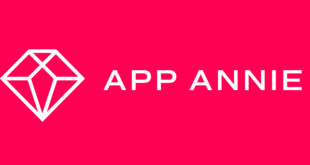Here at Mobile Pie we devote ourselves to building and selling glorious looking games that create a lot of joy.
Yet we aren’t the only ones – many visionaries, geniuses, chancers and fools pump out content in to the mobile games markets, leaving them flooded.
Launching a game in this competitive, open and price-squeezed space, without good understanding and marketing, will cause your game to sink along with your cash.
If you’re coming from a traditional ‘shelves and stock’ gaming background, you’ll need to forget a lot of the conventional wisdom you’ve learned. If you’re a first time indie, as much as it is painful to say, you’re going have to accept the importance of good marketing to make sure you survive.
There are two really important things to remember when selling a mobile game; production and distribution costs don’t apply, and they aren’t played in the same way as console or PC titles. Therefore, successful games are quickly accessible and instantly sticky and, when not free, very cheap.
There are many potential outlets for a developer, but only two are sizeable and frictionless enough to be of interest to a newcomer: Google’s Android and Apple’s iOS.
MOBILE ICONS
Apple App Store is the only outlet for iOS apps, but Android has numerous, including Google’s own Marketplace, as well as GetJar, Amazon and a smorgasbord of gated operator stores that come preinstalled on mobile devices.
All these outlets, however, have one thing in common; the apps are listed as a name and an icon. The browsing gamer, the majority of any app store’s customer base, are bombarded with lots of these high-level propositions, so getting a good combination of a few thousand pixels and forty characters to tell a convincing story is crucial.
It can be a pretty tough and counter-intuitive journey finding this story and many sink weeks and months in to it. A great way to narrow down is to A/B test on a network like AdMob. You can set up a series of campaigns with different name and icon combos, buy a set amount of impressions and monitor which get the best click-through. You can then tune and fiddle until you’ve hit gold. This requires very little cash up front – you can get good results from as little as $50 per campaign – but makes any future visibility instantly more effective.
And it is visibility that is so much the key. Traditional games PR would at this point book some magazine spreads, E3 booth babes and maybe a TV spot. In mobile, however, most awareness raising off portal is entirely futile.
Unlike at a high street specialist retailer, gamers come to stores from all kinds of different backgrounds, without always having exposure to specialist press and, unless directly linked to an app page, without the intention of acquiring a specific product. The average mobile gamer is looking for something fun, now.
This makes featured placements the most important thing in the early life of an app. All huge App Store hits have the same anatomy; Strong initial featured spots and killer high-level propositions – icon, name and user rating – leading to chart traction, which brings further visibility and, if the app is good, word of mouth buzz. This sets up a magical positive feedback loop sustaining hundreds of thousands of downloads a day.
STRIKING GOLD
This golden scenario happens to only a handful of games, and whilst the majority of apps fail, lots live on to be profitable with only moderate featured exposure.
Yet getting featured placement should be the number one goal of any developer. This is achieved either out of pure luck – being picked out of the crowd – or by networking, finding contacts and lobbying them for position.
When featured placement fails, an app easily slips in to obscurity. Visibility and installs can be bought with direct-link promotions such as in-game banner impressions, free promotions sites – Free Game of the Day and Free App a Day are excellent – and, where available, PPI.
PPI (Pay Per Install) is a controversial system of rewarding a player with virtual currency for installing another, often free, game. It was known by many as the dirty secret of top ranking freemium iOS titles, driving huge numbers of installs and effectively buying chart position. Apple recently closed the practice down overnight, but it is burgeoning on Android.
This article is not an exhaustive list. The markets move quickly and each outlet and platform has its individual quirks, each game type its own demographics and business models. Meanwhile marketing methods, such as player sponsorship and PPA (Pay Per Action) are fast emerging. So it’s essential to keep stay on top of progress, get out, network and keep an eye on industry press and chart movement.

 MCV/DEVELOP News, events, research and jobs from the games industry
MCV/DEVELOP News, events, research and jobs from the games industry



